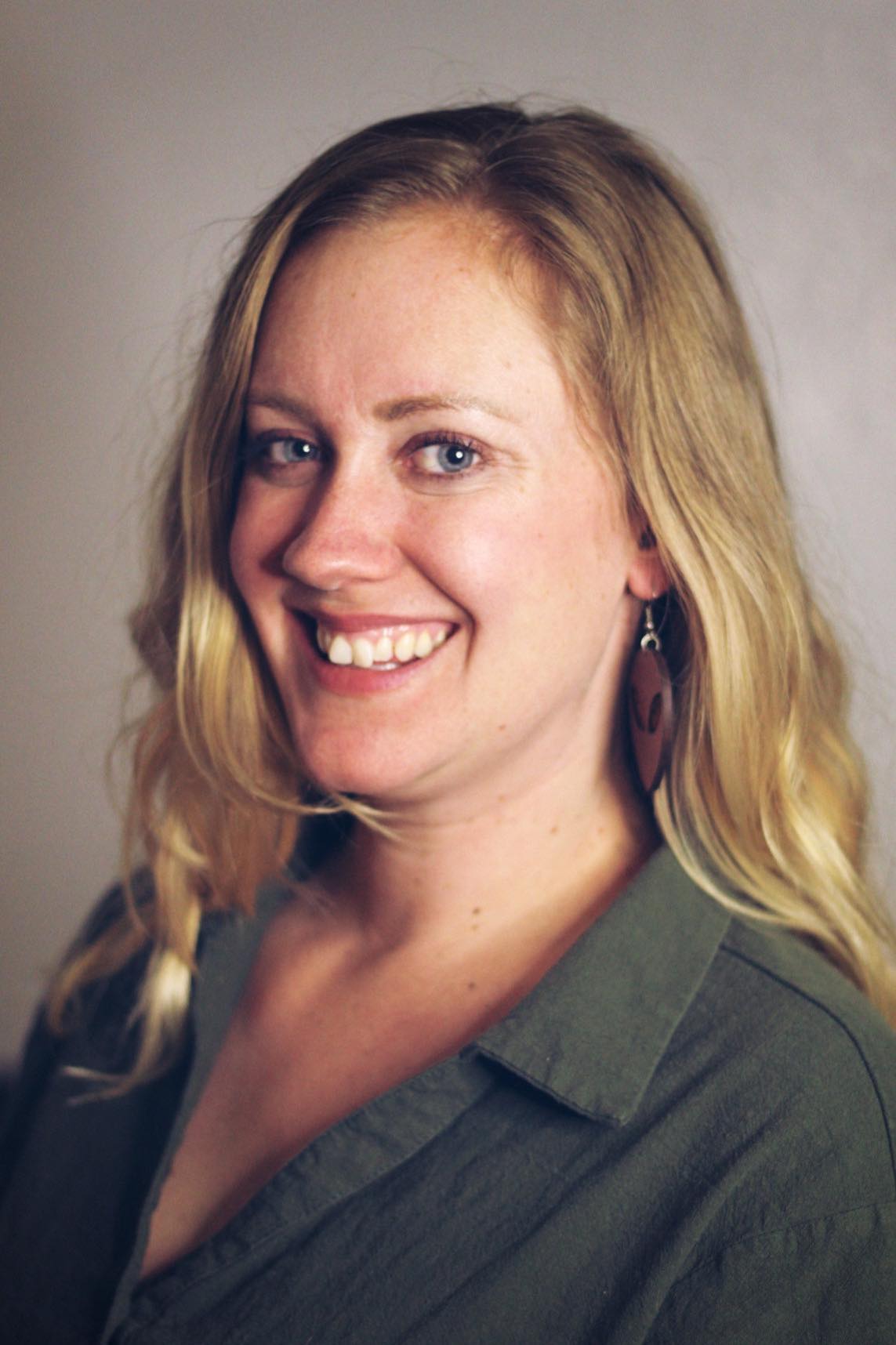1916 School Building Gets New Life as Affordable Housing in Miami, Arizona
With recent housing developments in Globe seeing success, the neighboring town of Miami, Arizona, has followed suit. Here’s what to know about the project.
Globe and Miami are two small but mighty towns nestled between Tonto National Forest and the San Carlos reservation, not too far off from Superior. With nearly an equal driving distance between Phoenix and Tucson, Globe and Miami are conveniently placed for locals, yet often overlooked by out-of-towners.
A brief history & evolution
Both Globe and Miami, often referred to by locals as Globe-Miami, were founded on the promise of riches through mining, an industry that still reigns supreme with Freeport-McMoRan, Resolution, Capstone, and other big-name mining companies. In fact, a significant amount of the world’s copper comes from these mines, with Miami’s town manager, Alexis Rivera, claiming that up to 30% of the world’s copper is found here.
With monocultures such as this, Globe-Miami is far from immune to the ebb and flow of the economy, particularly during times like the pandemic. Drive the 60 through either of these towns, and you will be met with dilapidated buildings, peeling paint, and rows of empty business buildings that couldn’t withstand the pandemic or preceding natural disasters. Look a little closer, though, and you will see a close-knit community of hardworking business owners and families fighting to make it through until the next boom of business. With talk of upcoming mine contracts adding a few thousand more people to the townships over the next few years, the next business boom may not be far off.
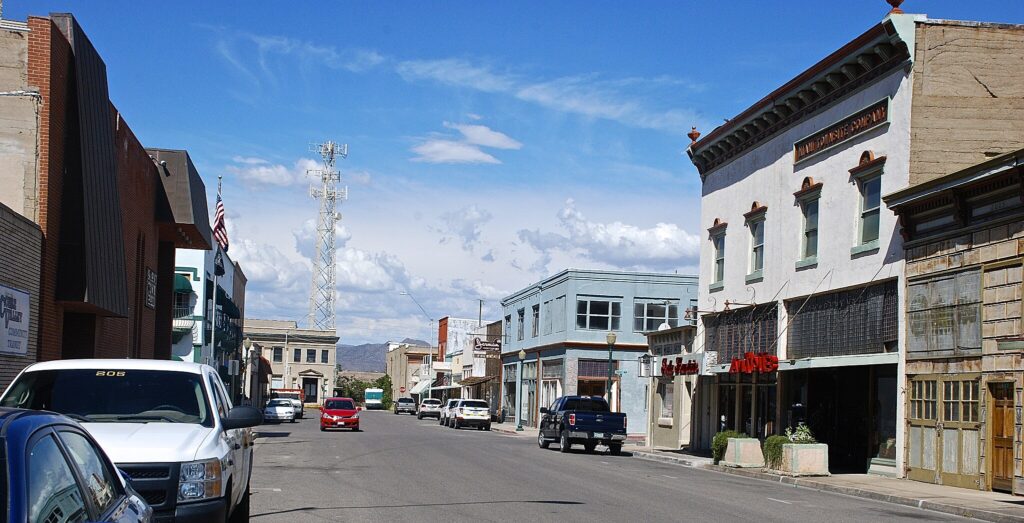
Business owners have been adding shops—from thrift stores to restaurants, private spas, tattoo parlors, and boutique bars—to help stabilize the economy. Although the cost of real estate in these small mountain towns remains a fraction of that of the valley, many buildings sit derelict and often beyond repair, an ode to the risk many consider before buying out this way. Rentals have also been on the slim side, as the household median income of the area is 43% less than that of Arizona as a whole, equating to a climate where residents cannot afford the average rent.
Recently, Globe saw the first new housing development in years with the Hill Street Apartments, a renovation of a historic building geared towards seniors and lower-income individuals. Gorman & Company completed this project in a few short years, sparking what appears to be a domino effect for the isolated area, which has long craved an update.
Sitting along Highway 60, the old Oyo Hotel was revitalized by the Red Roof Inn, and several other roadside buildings have been acquired within the last year, with new, promising projects on the horizon. Meanwhile, Miami’s town Manager has made deals with Freeport-McMoran and smaller business owners to help breathe new life into downtown Miami as part of a longer-term phase system to make this town an attractive haven for families.
Phase one saw the historical Hostetler Pool resurfaced and opened, alongside a new play structure and volleyball court in Veteran’s Park and a skate path complete with frisbee golf in Bouillon Plaza. Locals have been loving the facelift of the town, which has also ushered in new businesses such as Miami Flats—which features axe-throwing lanes—and Meading of the Minds, a meadery hall with a revolving menu.
As with the new business in Globe, though, many in Miami wonder how this sleepy mile-long town can accommodate new people and families. Alexis’ next phase of the plan is to build housing that can attract more people, thus offering more funding—alongside grants—to continue growing Miami.
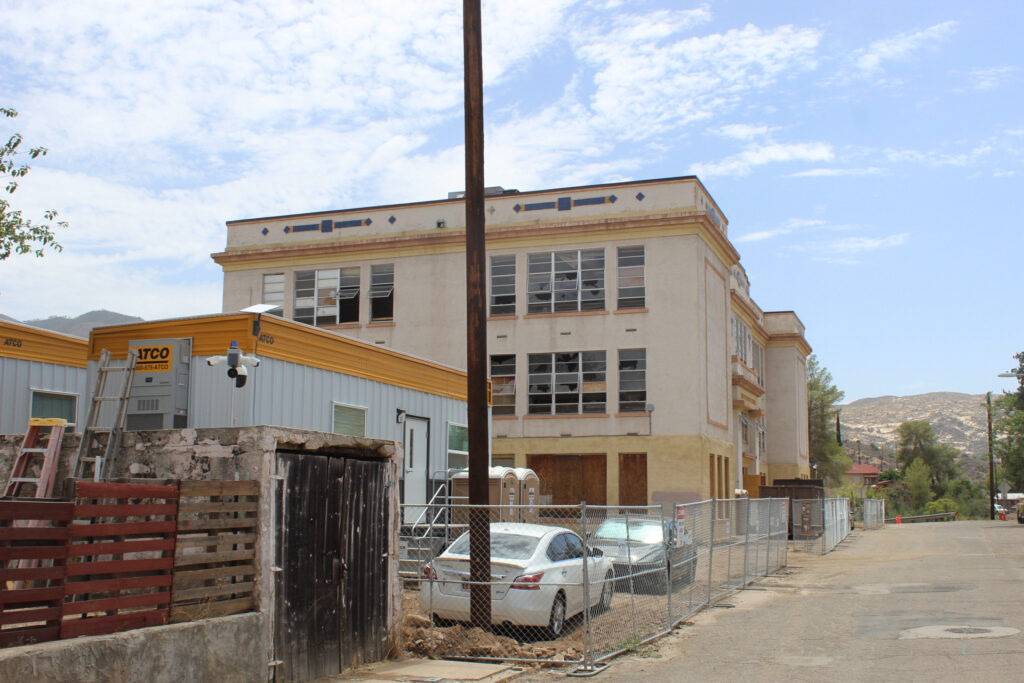
Project details & local opinions
With Alexis Rivera’s guidance, Chicanos por la Causa has undertaken development for the project known as the “Inspiration School Project,” which involves renovating an old school into a 40-unit apartment building. Inspiration School was built in 1916 and belonged to the Miami Unified School District. The school was closed as a response to declining enrollment—and thus a declining budget—and students were instead combined into a single elementary school in the area.
The project was initially proposed in 2019 and later approved in 2022 after Alexis Rivera’s inauguration as town manager. “There were about 6 months of hiccups, of back and forth, because there hadn’t been any sort of change in about 20 years,” Alexis confided when asked why the project didn’t happen until his step into office. Inspiration School is designed as a low-income housing development for working families. Rent is set to be within a range that directly reflects the income of the families approved to live there, similar to the Hill Street Apartments’ rental fee structure. However, with a splash pad, small community space, and gym, this complex is promising to be more attractive to the families Alexis hopes to attract to town.
A total of 40 units will be created, ranging from studios to three bedrooms. Parking will be designated on the once-basketball courts and also along Keegan Street, which is the road that sits behind the school. However, with the nearest grocery store three miles away along Highway 60, many locals wonder how the project plans to accommodate families since parking on the thin streets and within the grounds cannot accommodate 40 vehicles, let alone multi-car families.
“They’re trying to shove too much stuff into a small bag,” local Bunney Kessler strongly stated when asked her thoughts on the project. Bunney was raised in Miami, is a small business owner of the local shop Two Bored Ladies, and owns property beside the Inspiration School Project. The initial plans showed a layout that included the demolition of her property, but have since changed. Needless to say, she is unhappy about the handling of the project, but not for the reasons one might suspect.
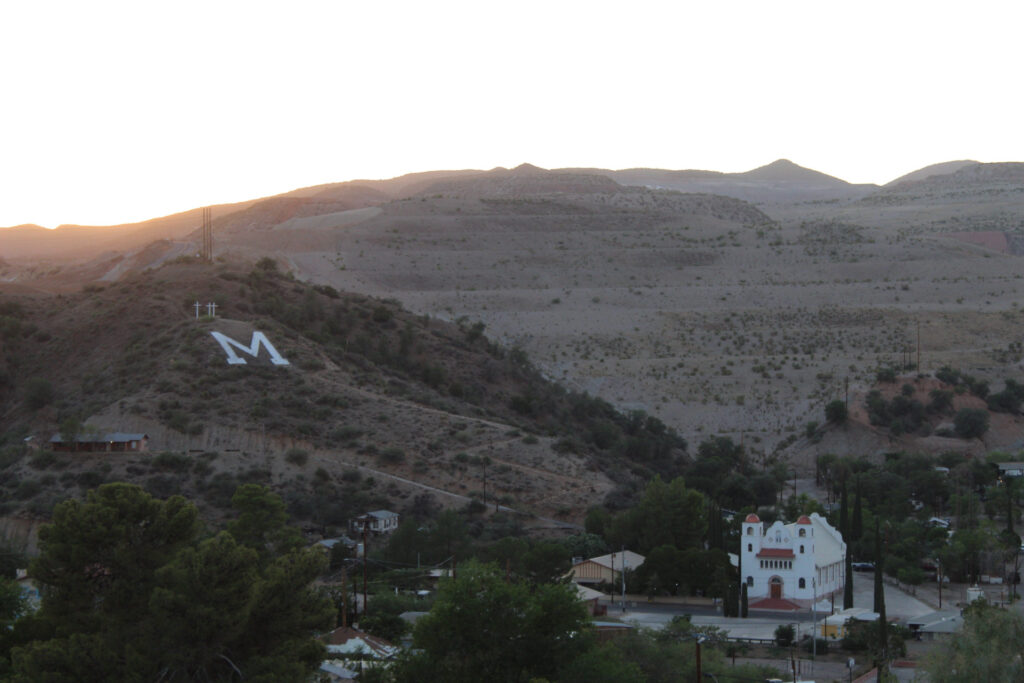
“Think of the infrastructure first,” she says when asked if she is anti-growth. She would love to see the town grow, especially as she has maintained Two Bored Ladies in the sleepy downtown for years, but is concerned about the infrastructure on Rose Road. Miami has seen its fair share of flooding throughout the decades, and the school had built a platform beneath the playground to redirect the water flow, which could otherwise wipe out the one-way road that sits on a hillside alongside several residential properties. The project has since removed this platform in favor of parking, yet another concern of Bunney’s, who already has a hard time driving down the road that is crowded by local homeowners and travelers stopping by to see the view of the “M” that sits above the Catholic church. “Why not 20 apartments?” she muses, seeking a compromise between the limiting infrastructure and the desire for housing and growth within the beloved town.
Bunney has made her loud—albeit not ungrounded—opinions known to the town council and others in charge who view the concerns as simply part of the pushback that comes with long overdue change. The push to grow Miami alongside Globe seems to win, even past infrastructure logistics that Bunney is convinced she knows best on. “Sometimes I’m wrong … prove it,” was her departing statement and plea, a last-ditch effort for hope that her take on the infrastructure can be proven wrong.
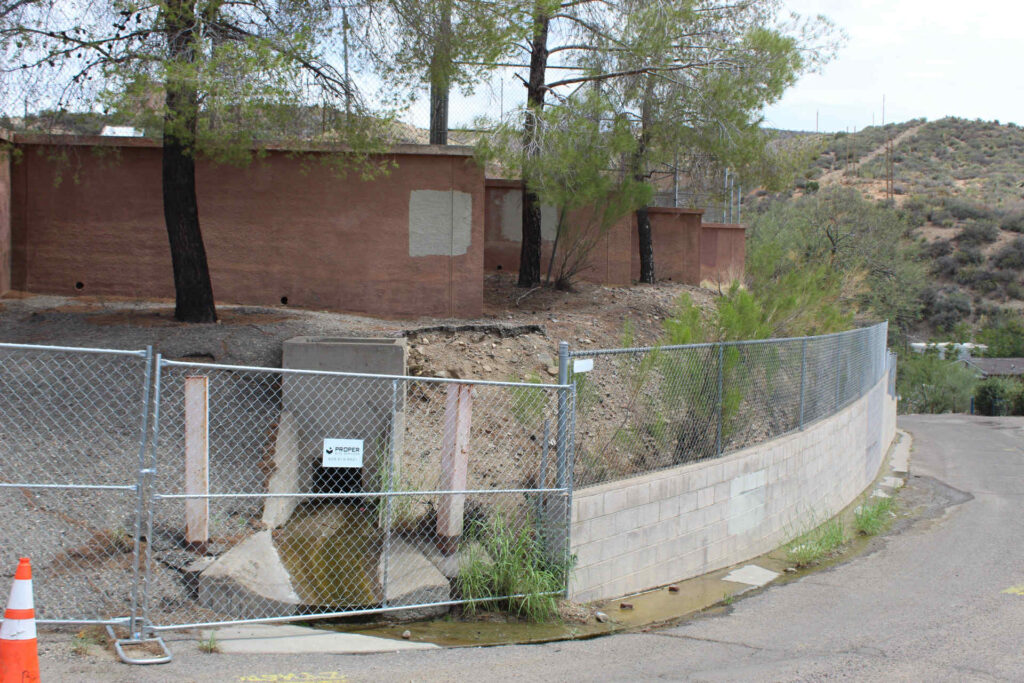
Others are excited for the project, as affordable housing has been a long-sought-after addition to the town’s growth, which otherwise seems stifled by withering real estate that could be apartment buildings. Alexis has alluded to exciting things to come with those buildings, as an extension of this current phase.
The owner of Globe’s private tattoo parlor, Best Kept, is excited for the growth of Miami, in whatever form, as he lives in Miami but rents space for his business in Globe. The majority of his clients drive in from the valley, so he asserts that there is more for them to do in Globe when they make a day trip of 60-90 minutes. Growth in the town of Miami would allow him to live and work in the same town, thus adding to the tax revenue that can be used for further development of this charming yet tired town.
Big D Construction, an established construction company based in Tempe, is completing the construction of the Inspiration School Project. While the playground water diverter is out of sight, it appears a different drain is in place, which helps offset the flow of water from the neighborhood, sending it down the one-way hilly drive of Rose Road. With the completion of the demolition and bottom-floor plumbing in July, an issue with the water may be the only factor that could delay the projected finish date of August 2026, with October 2026 as the absolute final deadline.
One of the engineers mentioned an exposed water main, as well as an issue with the water company wanting to remedy it. This setback could take up to a month, she said with reassurance that the project will still be completed by late summer of next year. With the experience and expertise of Big D Construction, there is an air of confidence that the reassurance is more than just a false hope. When asked about the issue directly, Alexis assured that he is being as aggressive as possible to speed things along with Arizona Water Company, which handles the water for the Globe-Miami area.
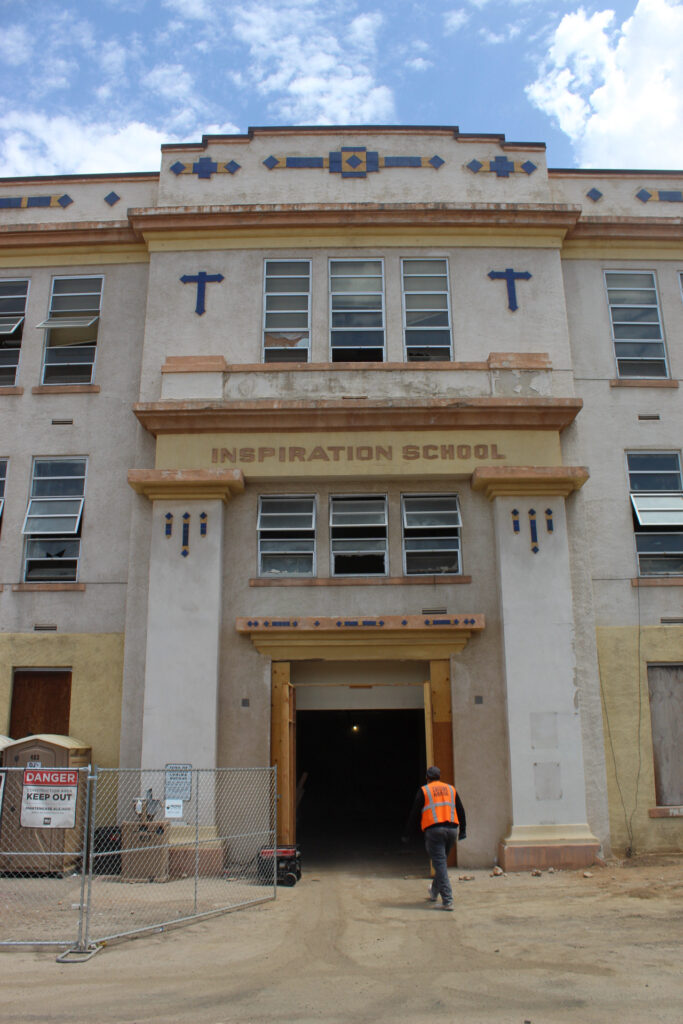
The financing for this extensive rebuild is done through federal funding and grants filed for by Chicanos por la Causa, or CPLC. CPLC first identified the need for this project around 2019, but were met with demands, compromises, and a slough of concerns, ultimately halting the build before Alexis took office. CPLC is a nonprofit that has served several states nationwide and has been backed by former President Barack Obama. CPLC currently houses over 3,500 low-income families through sweat equity programs and low-income home and apartment rentals through the Federal Neighborhood Stabilization project.
CPLC has been around in other community-driven capacities since 1969, through education and housing drives, to create lasting impact that empowers the community. Community drives are volunteer-based and all led by powerful community leaders, many of whom come from Globe-Miami’s region, known as the Copper Corridor. Because of this, Maria Jesus Cervantes, Vice President of Public Relations and International Affairs at CPLC, has shared that she is proud that CPLC is helping a community “that has given so much to the state.”
With nearly 60 years of experience from CPLC, equal experience from Big D Construction, and the drive to revive this town into a family-friendly haven, one thing is for certain: The Inspiration School Project promises growth that is critical to the revitalization of Miami, Arizona. Can it withstand infrastructure worries? Locals will continue to hold their breath with hope that this is yet another successful and inspirational project spearheaded by Alexis Rivera. Here’s to fall 2026 and the growth to come.



